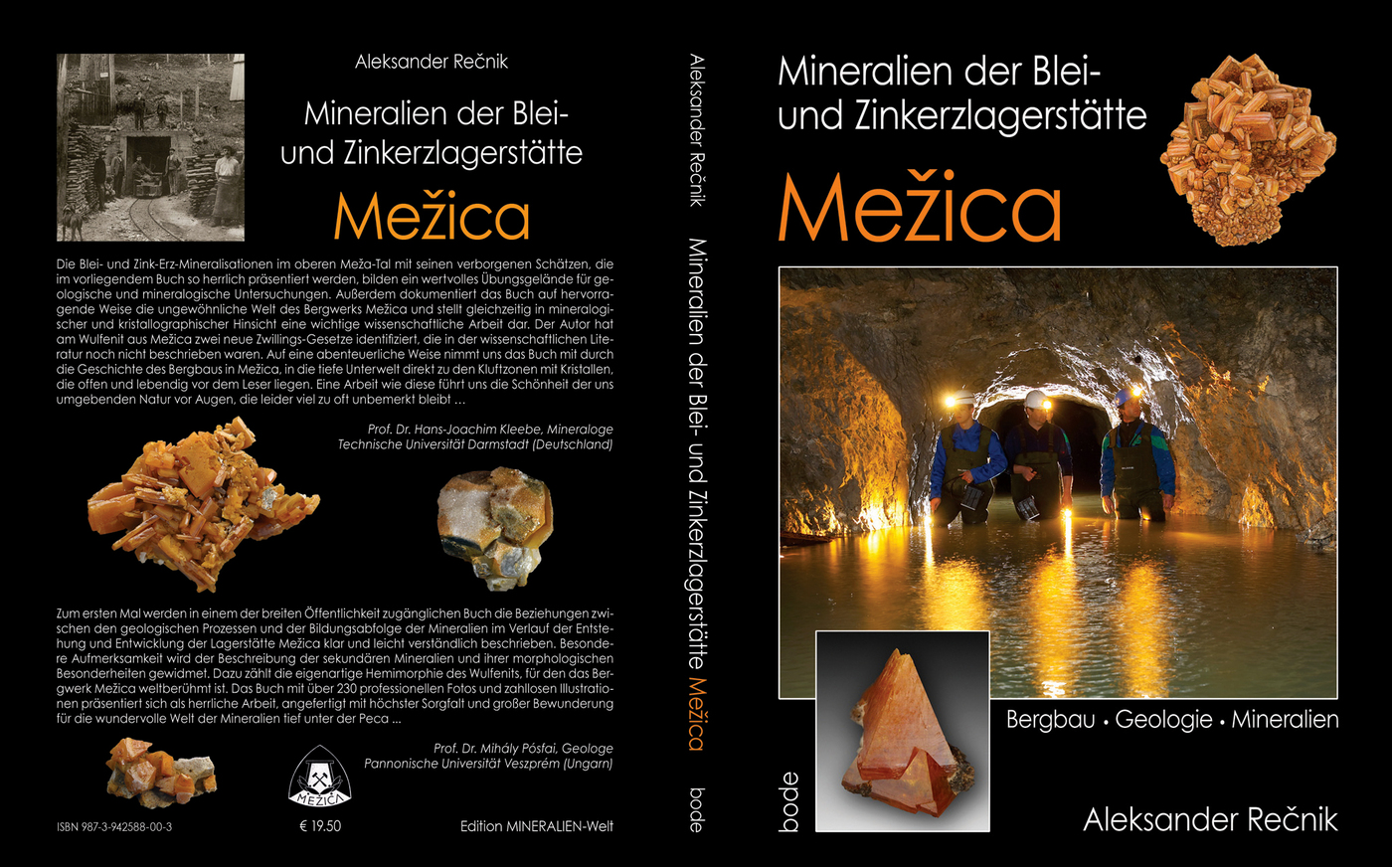New Book Soon - Mežica, by Aleksander Rečnik
Last Updated: 21st Oct 2010By Jolyon Ralph
New Book Soon - Mežica, by Aleksander Rečnik
I've just received these images from the new book on Mežica, Slovenia by Dr. Aleksander Rečnik.
The book 'Minerals of the lead and zinc ore deposit Mezica' is a first comprehensive overview of mining history, geology and mineralogy of the Mezica mine (Carinthia, Slovenia), where during 350 years of mining, over 1000 km of tunnels, used for ore tracking and transportation, were excavated together with several hundred kilometres of stopes and mine workings on the existing ore bodies. Nowadays, a large number of surface pits and over 300 mine adits are still visible in the upper sections of the Mezica-valley ore deposit. The most abundant mineral in the 2000m deep oxidation zone is wulfenite, which has even been mined as a molybdenum ore. Over 80,000 tons of wulfenite (well crystallized specimens!) were smelted for the production of molybdenum! Mezica is famous for unusual bipyramidal and pyramidal wulfenite crystals and two types of wulfenite twins, first time described in Mezica. This richly illustrated monograph has over 200 high-quality photographs of superb older and also new specimens collected during 2005-2010 in the frame of a research project guided by the author.
Hard-bound, 112 pages, format: 225x170 mm, printed in English, German and Slovene.
Published by Bode Verlag, October 2010
Dr. Aleksander Rečnik, born in 1962, graduated with a PhD in materials Science in 2005. After graduation he specialized in the field of high-resolution transmission electron microscopy at the Max-Planck Institute in Stuttgart. Today he is employed by Jožef Stefan Institute. The focus of his research are structural defects and phase transformations in minerals at the atomic scale. Since his young age he is a dedicated mineral collector. He has a large mineral collection, specialized to domestic localities. He published several popular and scientific articles and books on Slovenian mineral localities.
Since 2004 he is a leader of national project "Research and conservation of natural heritage in the field of mineralogy in Slovenia". In the frame of this project he published a 384-page book "Mineral localities in Slovenia" describing geology, formation and paragenesis of major Slovenian localities.
In October 2010 we will see this new book "Minerals of the lead-zinc ore deposit Mežica", which will be launched at the Munich mineral show.
Article has been viewed at least 12128 times.


















